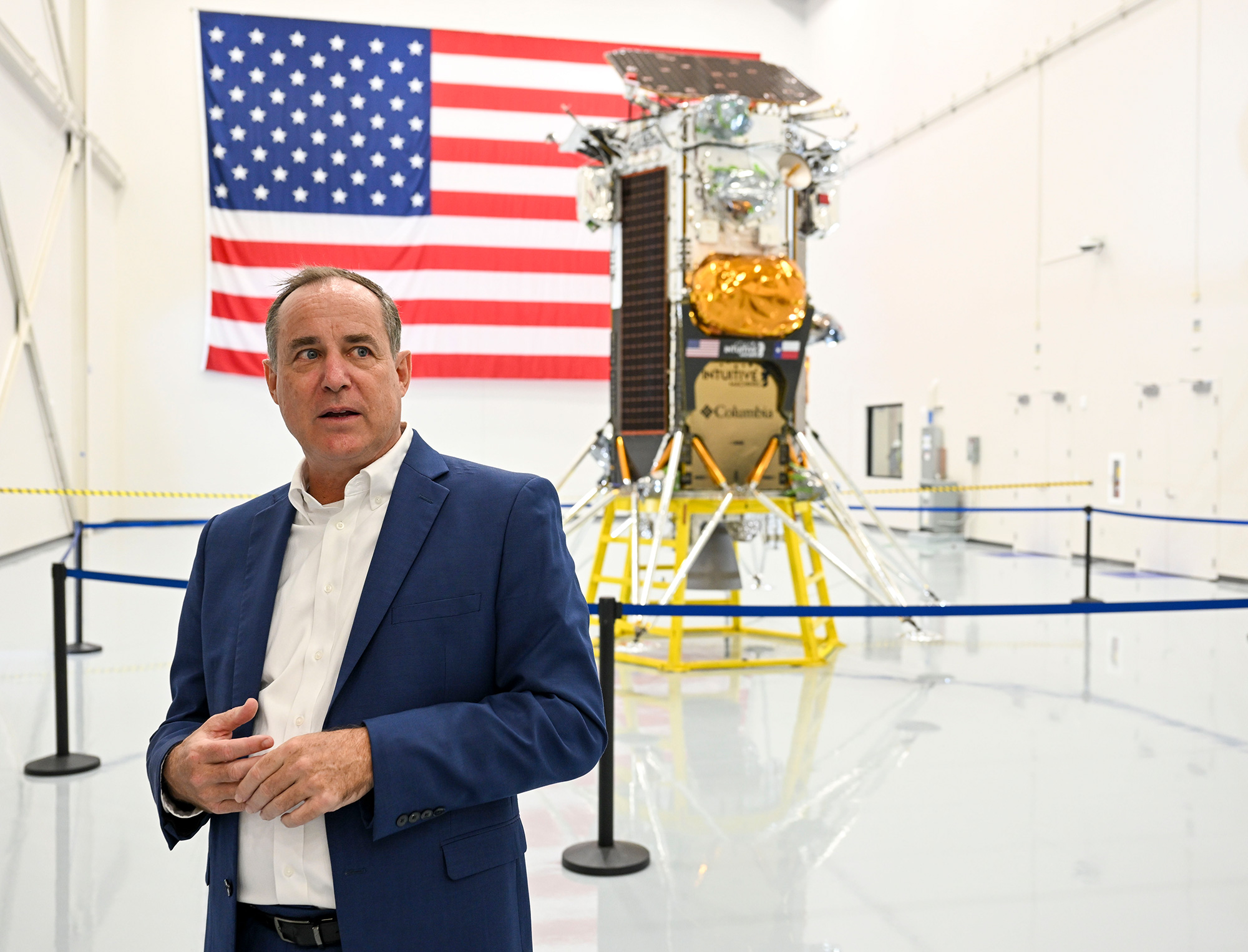
Intuitive Machines, an American space company, successfully orchestrated the first commercial moon landing, marking a pivotal moment in the United States’ lunar exploration efforts. This historic milestone, achieved more than half a century after the last manned Apollo mission, signifies not only a return to the lunar surface but also the beginning of a new era dominated by commercial space endeavors.
The Historic Journey to the Moon
The Houston-based company’s triumph is the culmination of NASA’s strategic investment in commercial partnerships, exemplified by the $2.6 billion in contracts awarded to Intuitive Machines and other companies. These partnerships are integral to NASA’s ambitious plans to ferry instruments to the moon, facilitating a series of missions aimed at establishing a sustainable human presence on the lunar surface and beyond.
Despite encountering technical hurdles, including a critical malfunction in the spacecraft’s laser rangefinders—essential for hazard avoidance—the Intuitive Machines team demonstrated exemplary problem-solving prowess. Faced with potential mission failure, they executed an additional lunar orbit, affording engineers the crucial time needed to implement a software update. This innovative solution leveraged onboard NASA lasers, an approach previously untested in the vacuum of space, showcasing the team’s adaptability and the mission’s cutting-edge technology.
A New Era of Lunar Exploration
The spacecraft named Odysseus made its historic descent on the Malapert A crater, strategically located near the lunar south pole, a region rich in ice deposits. These deposits are highly sought after for their potential to support future lunar bases by providing essential resources such as water, oxygen, and rocket fuel. Odysseus’ successful landing thus represents a significant step forward in utilizing lunar resources, potentially revolutionizing space travel and habitation.
This mission is a cornerstone of the Commercial Lunar Payload Services (CLPS) initiative, through which NASA seeks to leverage the private sector’s innovation to accelerate lunar exploration. By outsourcing lunar deliveries to commercial entities, NASA aims to reduce costs and increase the frequency of missions, thereby enhancing its lunar research and exploration capabilities. The success of Intuitive Machines, secured through a $118 million contract, underscores the viability of this model and sets a precedent for future commercial lunar missions.
Technical Challenges and Mission Success
The journey to this historic landing was fraught with challenges, including the failure of previous attempts by other commercial ventures. The mission’s eventual success serves as a testament to the technical strength, resourcefulness, and determination of American companies engaged in space exploration. It validates the CLPS program’s approach, offering a promising pathway to achieving NASA’s ambitious goals for lunar and Martian exploration.
Odysseus’ mission was not merely a demonstration of technological prowess but also a cargo mission of significant scientific importance. Launched aboard a SpaceX Falcon 9 rocket, the lander carried an array of payloads, including scientific instruments and technological demonstrators. These payloads are designed to pave the way for human exploration of the moon’s south pole by gathering critical data on the lunar environment, resources, and the feasibility of sustaining human life on the moon.
- Scientific Instruments:
- To study the lunar environment
- To assess the availability and accessibility of lunar resources
- To support future human exploration and habitation efforts
- Technological Demonstrators:
- To test new technologies in the lunar setting
- To demonstrate communication and navigation systems on the moon
- Cultural Significance:
- An art piece by American artist Jeff Koons, symbolizing the broader cultural and inspirational significance of space exploration
- The artwork includes 125 small stainless steel balls representing the moon’s phases, honoring human achievements and inspiring future generations
The Future of Lunar Exploration and Economy
As nations and private entities worldwide race to unlock the moon’s secrets and resources, the successful landing of Odysseus by Intuitive Machines propels the United States to the forefront of this new lunar exploration era. This achievement not only reaffirms America’s leadership in space exploration but also heralds the dawn of a lunar economy, where commercial ventures play a pivotal role in advancing humanity’s presence in space.
Looking ahead, the success of this mission injects newfound confidence into the burgeoning lunar economy and sets the stage for the next chapter of lunar exploration. With eyes now firmly set on the moon’s south pole, the international community awaits the next leaps in lunar exploration, anticipating further breakthroughs that will expand our understanding of the moon and our place in the cosmos.
Related News:
Featured Image courtesy of The Washington Post via Getty Images
